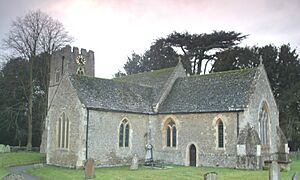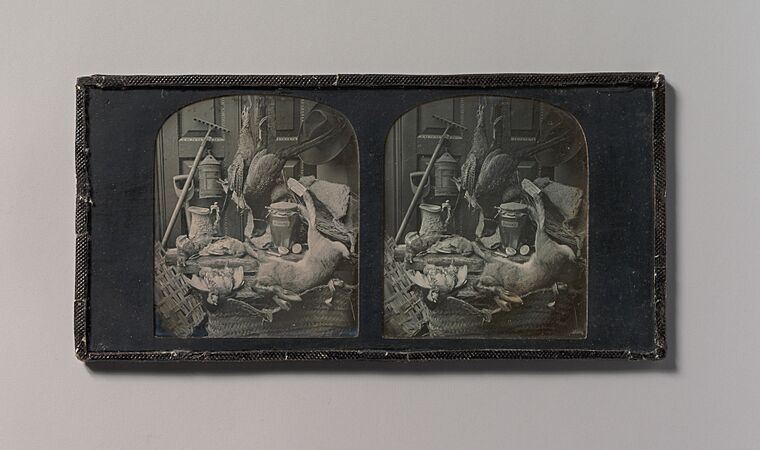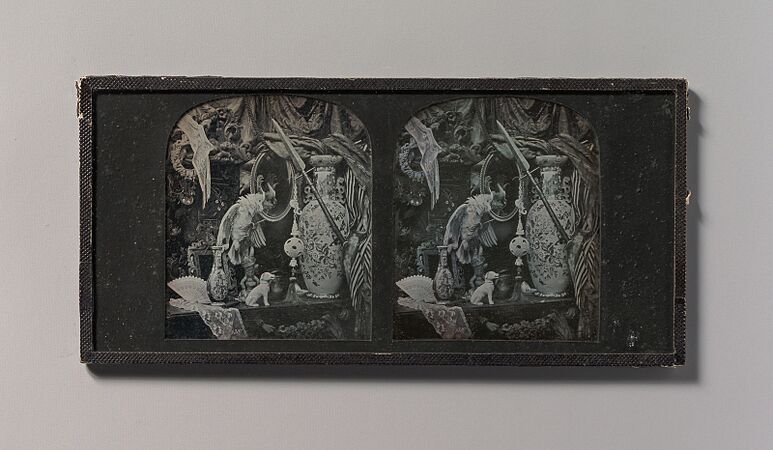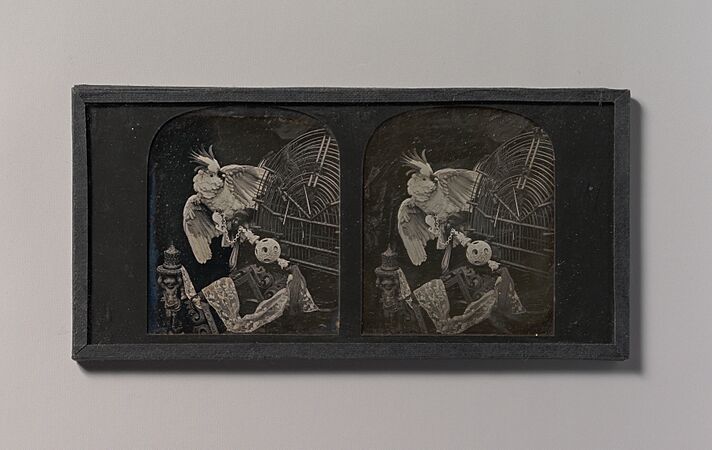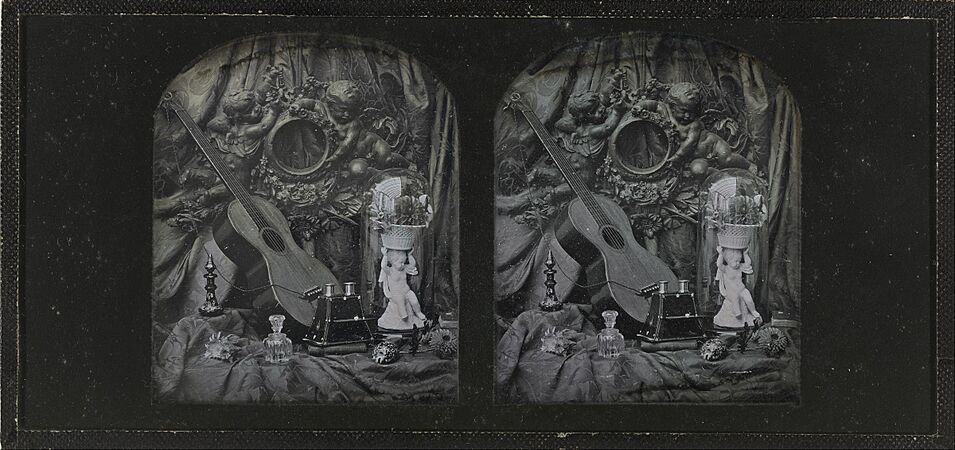Thomas Richard Williams facts for kids
Thomas Richard Williams (born May 5, 1824 – died April 5, 1871) was a British photographer. He was one of the first people to create amazing 3D pictures, also known as stereographs.
Williams started his photography business in London around 1850. He became famous for his special 3D photos of the Crystal Palace. He also took many portraits of people. He thought these portraits were his biggest success.
Contents
Early Life and Learning Photography
Most of what we know about T. R. Williams comes from the research of Dr. Brian May and Elena Vidal. They have written books and articles about him.
Williams was born in Blackfriars, London, on May 5, 1824. When he was a teenager, he became an apprentice to Antoine Claudet. Claudet was a famous photographer and inventor. Williams learned a lot from him.
Williams probably spent much of his childhood in the village of Hinton Waldrist in Berkshire. This village later became a favorite subject for many of his photographs. He clearly loved this place very much.
Claudet was a great teacher. He was always trying new things with photography. He believed that photography was a new art that would keep getting better. Claudet was very interested in stereography, which is how you make 3D images. This interest greatly influenced Williams. Scientists had been fascinated by how our eyes see in 3D for a long time.
Williams was amazed by Claudet's inventions. These inventions used two almost identical pictures placed side by side. When viewed with a special device, they looked like one 3D image. Williams learned how to make these special pictures. He became very skilled at creating daguerreotypes, which were early types of photographs.
Williams got married in 1847 to Elizabeth Gorfin. They had twelve children, but sadly, four of them died when they were babies. Williams left Claudet's studio to support his growing family. By 1851, he had opened his own photography business.
Becoming a Successful Photographer
In 1851, there was a huge event called The Great Exhibition at The Crystal Palace in Hyde Park. Williams took high-quality 3D pictures inside the Palace. These photos showed how amazing 3D photography could be. Even Queen Victoria was impressed by the new 3D viewers.
Williams' first studio was in Lambeth. It was also his home. He quickly became known as a wonderful portrait photographer. People loved his elegant and refined portraits. His studio was so popular that carriages often blocked the street outside!
By 1854, his business was doing so well that he opened a separate studio on Regent Street. Even though there were many other photography studios nearby, Williams didn't need to advertise much. Wealthy people sought him out, and his 3D portraits became very popular.
Williams also started taking artistic photos of things like fruit or flowers (called still life). These pictures helped start a big trend in 3D photography in the 1850s. People loved them, and sales went through the roof!
In the mid-1850s, Williams teamed up with the London Stereoscopic Company (LSC). The LSC helped mass-produce his photos, so more people could buy them. The LSC published three main series of Williams' 3D pictures.
His "First Series" included portraits and artistic still life photos. These still life pictures looked a lot like 17th-century Dutch paintings. They showed amazing detail and depth. Some photos in this series, like "The Launching of the Marlborough," were taken from a moving boat. This was very impressive for the time, as it showed "instantaneous" photography.
His second series was called "The Crystal Palace." This time, the Palace had been moved to Sydenham. Williams' original photos from this series were so clear that you could even see the faces of Queen Victoria and her group, even though hundreds of people were in the pictures.
Scenes in Our Village
Williams' third and most famous series is called "Scenes in Our Village." Dr. Brian May and Elena Vidal wrote a book about it called A Village Lost and Found.
This series had 59 hand-colored 3D pictures on cards, like old postcards. They showed everyday village life: trees, brooks, people gossiping, marriage proposals, children playing, cottages, and bridges. When you looked at these pairs of photos with a stereoscope, they became vivid 3D images. It felt like you could walk right into the picture!
On the back of most cards, there was a short poem, probably written by Williams. For example, for a picture of corn being stored: "Taking Corn Into the Granary." From storm and rain The garnered grain Is housed, and come what may, In his granary stored, The farmer's hoard, Lies snug till market day.
For many years, people thought this village was made up. But recent research showed that all the pictures were taken in Hinton Waldrist, the village Williams loved! Dr. May even put a photo of the village church on his website, and people quickly identified it.
This discovery was exciting because it meant the people in the photos were real villagers Williams knew. This made the series even more special and personal. Williams even appeared in some of his own photos, usually facing away from the camera, wearing a top hat.
Even though his photos were very popular, Williams stopped making these types of images. He felt they were being copied too much.
Photographer to the Queen
In 1856, Williams' fame grew so much that he was asked to photograph Princess Victoria on her sixteenth birthday. This was the first of many photos he took for the Royal Family.
He also photographed Princess Alice, Princess Louise, Princess Helena, and Princess Victoria with her first son, Prince William. Many of these photos are now in the Royal Collection at Windsor Castle.
After his work with the London Stereoscopic Company, Williams made other types of photos, like cartes de visite (small portraits). On the back of these, he proudly stated he was "Photographer to the Queen."
Awards and Recognition
Williams was a member of the Photographic Society from the very beginning. He also belonged to other photography groups.
He won medals at important exhibitions, including the Paris Exposition of 1855 and the London International Exhibition of 1862. He also received a medal from the Photographic Society of London in 1866.
Williams created a huge amount of work. It was said that he personally checked and approved every single print before it left his studio. His success allowed him to move his family to a large mansion called Sellers Hall.
Later Life and Legacy
In the late 1860s, Williams' health started to get worse. He died at home on April 5, 1871, just before his 47th birthday. His death certificate said he died from diabetes. However, researchers think that the chemicals used in early photography might have made him sick.
Today, Williams is seen as a very important person in the history of 3D photography. His 3D cards were some of the first photographic art to become widely popular and successful. Many people around the world collect his prints, but no one person has a complete collection of all his known works.
Gallery


